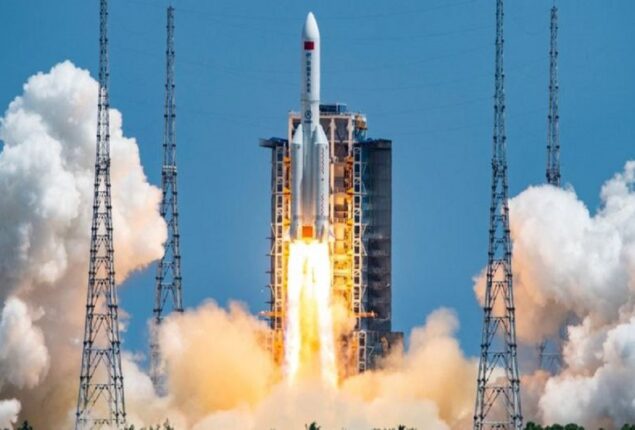
Chinese rocket Debris from space falls back to Earth
Chinese rocket debris has crashed to Earth over the Indian and Pacific oceans, US and Chinese officials say.
China’s space agency said most remains of the Long March 5 burnt in the atmosphere, identifying the Sulu Sea in the Pacific as the re-entry location.
Earlier, space experts had said the probability of the rocket landing in a populated area was extremely low.
The uncontrolled return of rocket’s core stage has raised questions about responsibility for space junk.
There have previously been calls by Nasa for the Chinese space agency to design rockets to disintegrate into smaller pieces upon re-entry, as is the international norm.
In a tweet, the US Space Command said the Long March 5 “re-entered over the Indian Ocean at approx 10:45 am MDT [16:45 GMT] on 7/30”.
It recommended readers to Chinese officials for specifics.
China’s space agency announced re-entry coordinates as 119° E longitude and 9.1° N latitude. This is the Sulu Sea east of Palawan in the north Pacific.
Recent rockets to China’s incomplete Tiangong space station lacked controlled re-entry.
The Long March 5 rocket launched a lab module to Tiangong last Sunday. The Chinese authorities stated Wednesday that the rocket’s re-entry poses minimal danger to people on the ground since it would likely crash in the sea.
The rocket might fall over a populous region, as happened in May 2020 in Ivory Coast.
Before crashing, the empty rocket body was in an elliptical orbit above Earth, headed for uncontrolled re-entry.
Satellite operators prioritise disintegrating objects following atmospheric re-entry. Using low-melting-point materials like aluminium helps.
In rockets, this is costly since materials like titanium need high temperatures to burn. Size is also a concern, particularly for the 25-tonne Long March 5.
Also Read
Catch all the International News, Breaking News Event and Latest News Updates on The BOL News
Download The BOL News App to get the Daily News Update & Follow us on Google News.




